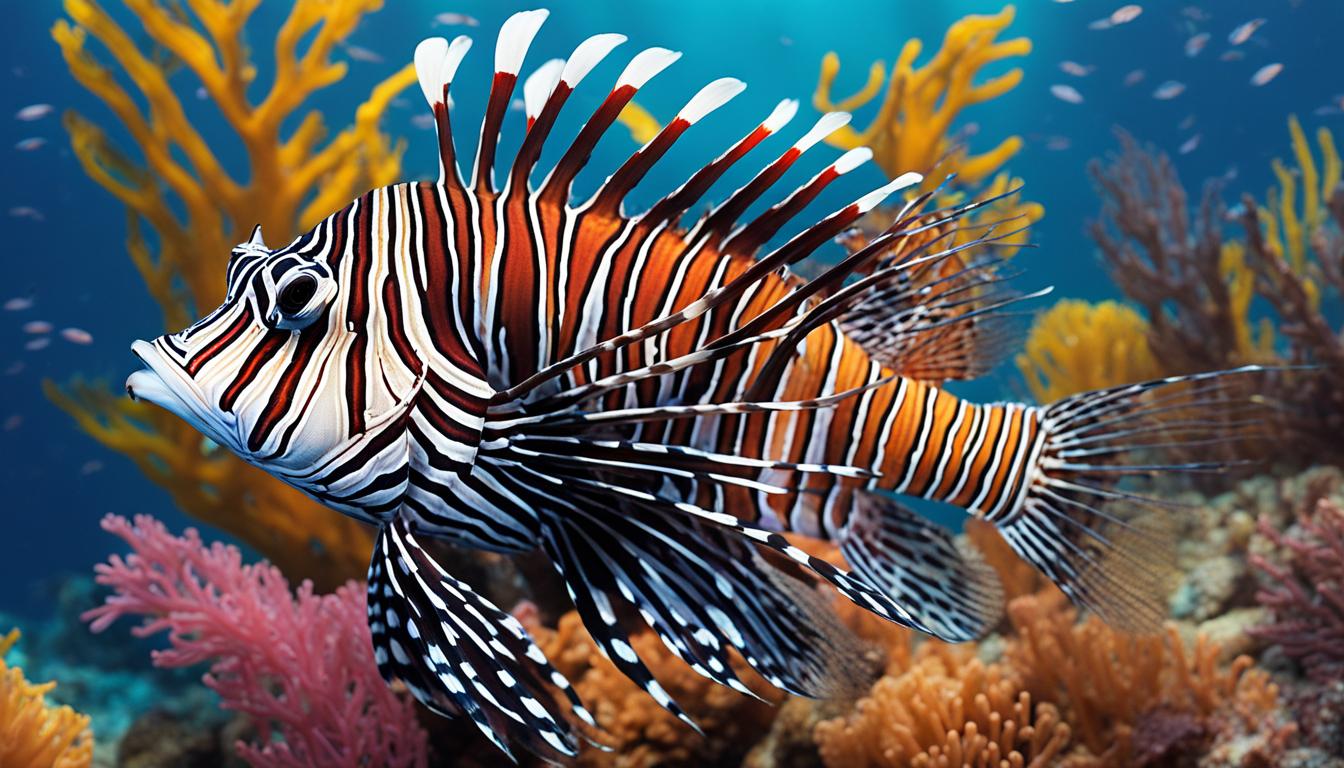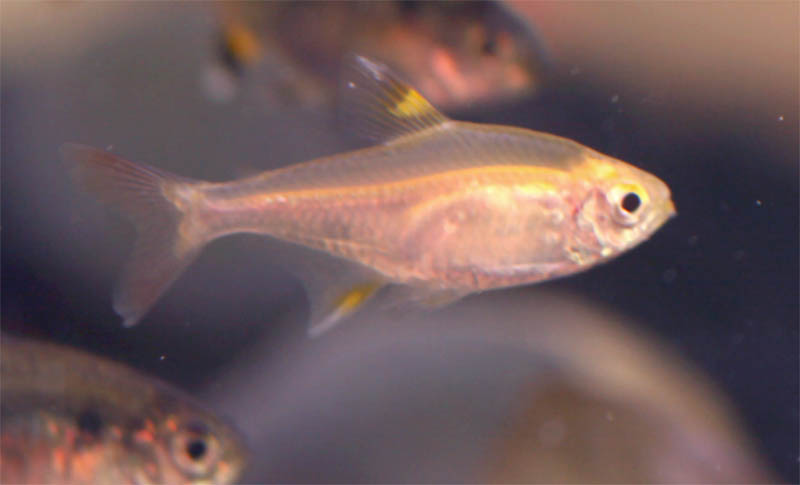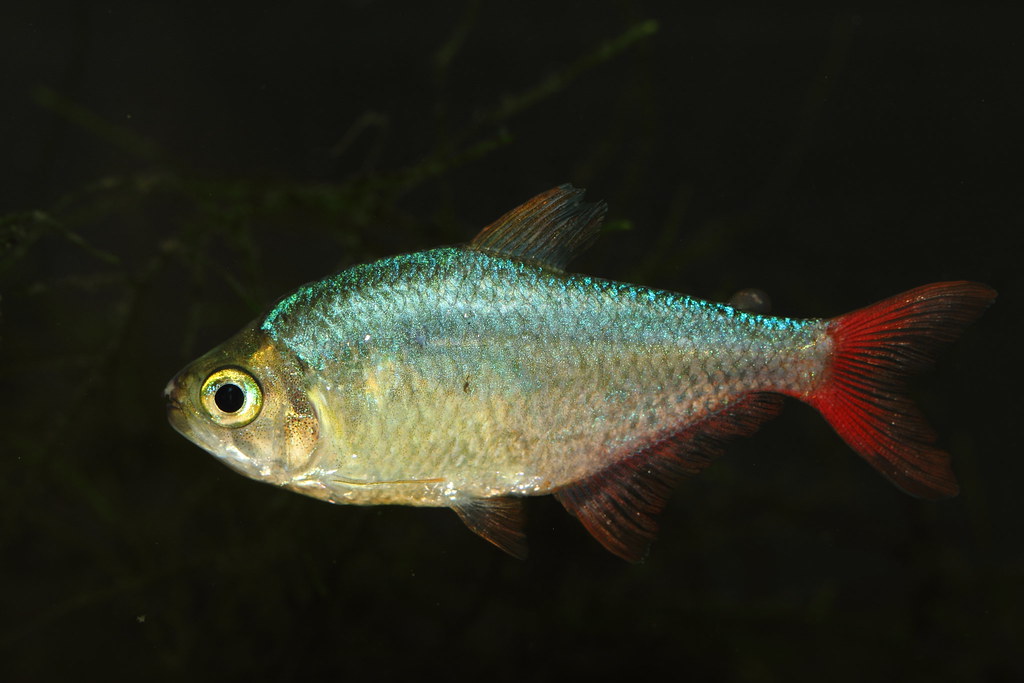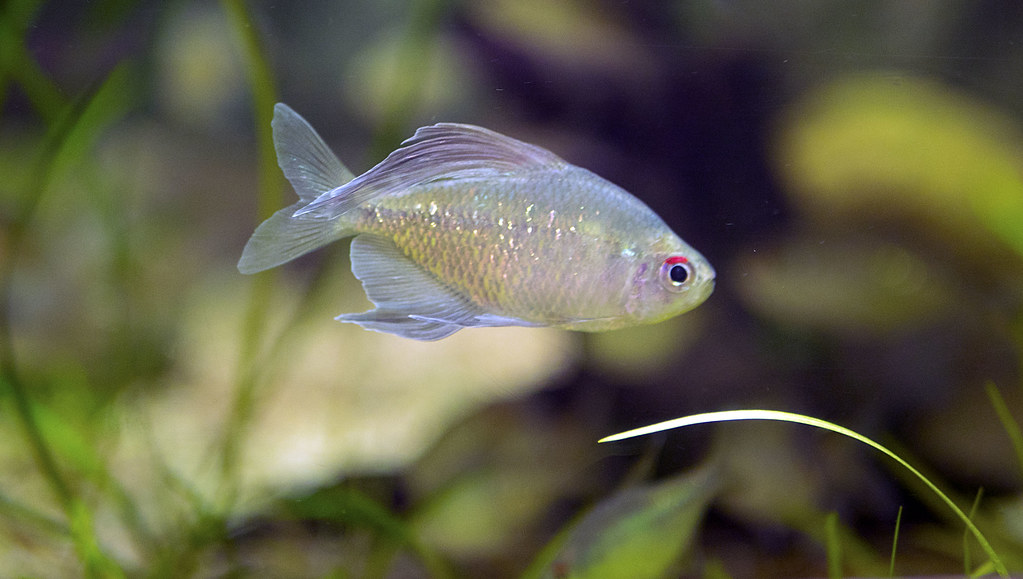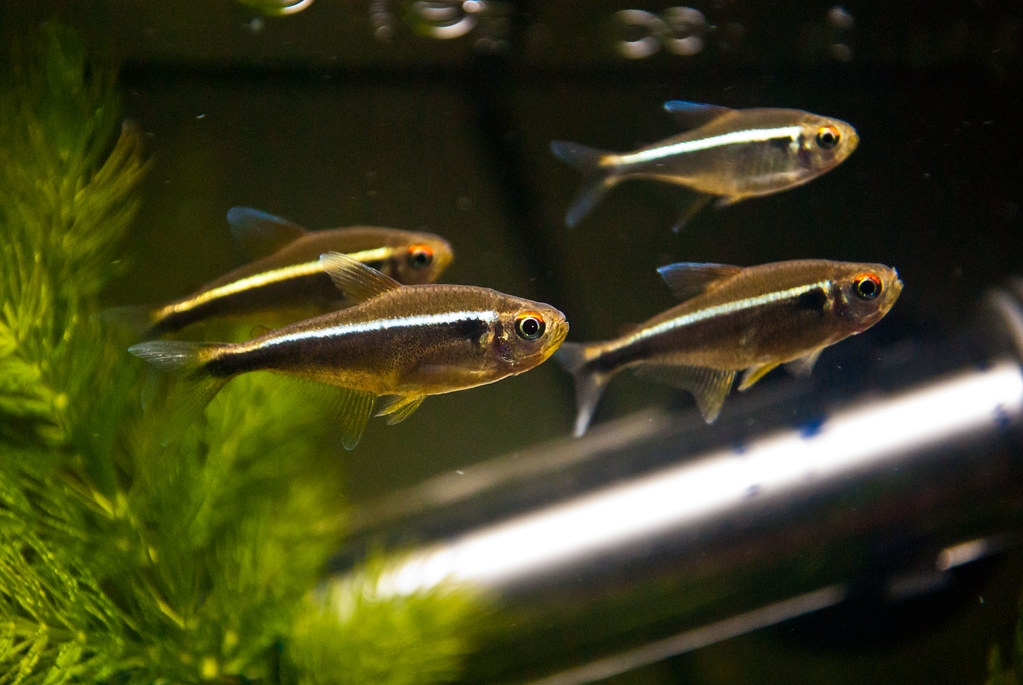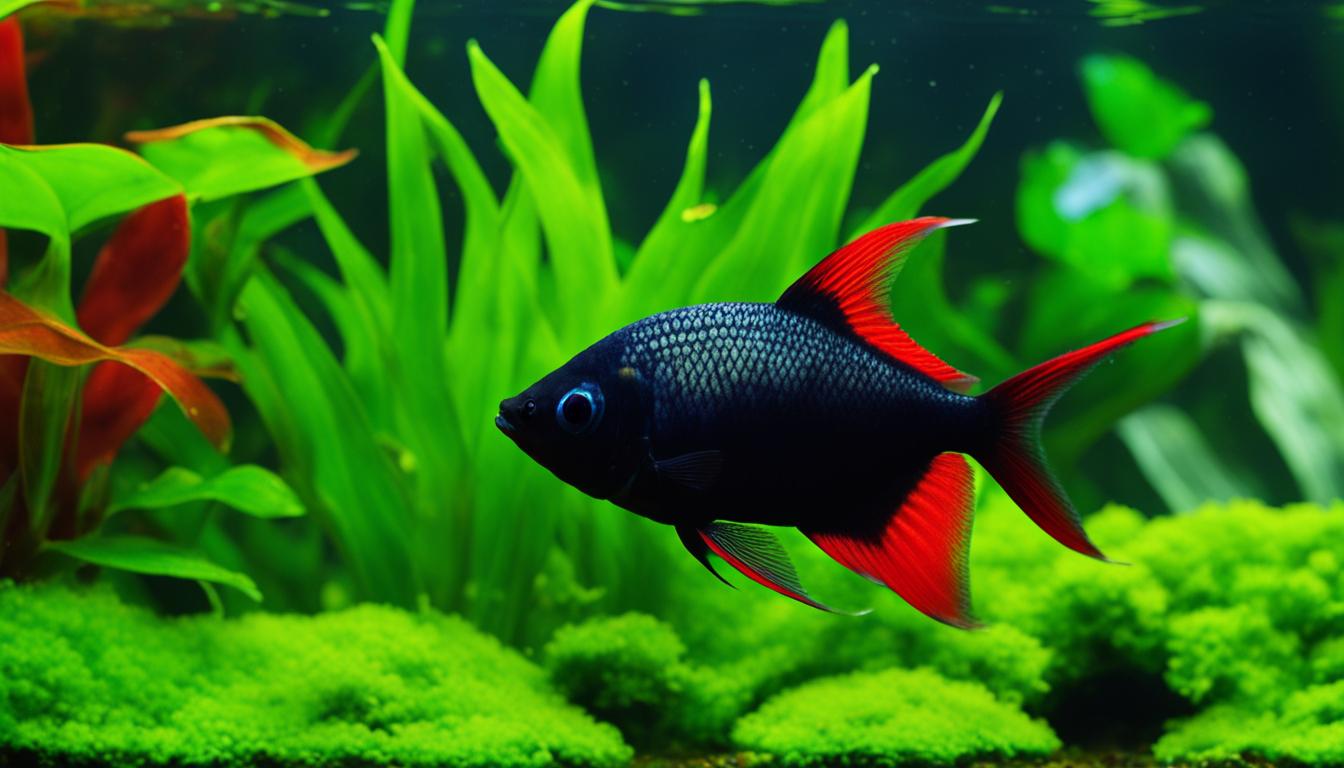As a lover of exotic fish and marine life, I’m excited to share with you the intriguing world of the fu manchu lionfish. These stunning creatures boast vibrant colors, unique fins, and a venomous nature that makes them both alluring and fascinating. But their impact on aquariums and reef ecosystems cannot be overlooked. In this article, we’ll explore the beauty and enigma of the fu manchu lionfish, its role as aquarium pets, and its impact on the delicate balance of reef ecosystems.
Table of Contents
Key Takeaways:
- The fu manchu lionfish is an exotic and mesmerizing species of fish.
- These creatures have venomous spines and are a formidable predator.
- While a popular choice for aquarium pets, their introduction to certain regions can disrupt delicate reef ecosystems due to their voracious appetite.
- A responsible approach to fishkeeping can ensure the well-being of fu manchu lionfish and the sustainability of their population.
Unveiling the Fu Manchu Lionfish: An Exotic and Venomous Fish
As a member of the larger family of lionfish, the fu manchu is a unique and striking fish species known for its vibrant colors and distinctive fins. Its captivating appearance alone has made it a popular choice for aquarium enthusiasts and divers alike. However, what truly sets this fish apart is its venomous spines, which make it a formidable predator in the underwater world.
The venom of the fu manchu lionfish can cause intense pain, swelling, and in rare cases, even paralysis. The spines are primarily used for defense against predators, but they are also used for hunting prey. These venomous spines can grow up to 18 inches long, making the fu manchu lionfish a dangerous fish to come across in the wild.
“The fu manchu lionfish is one of the most striking and dangerous fish species in the ocean. Its venomous spines make it a fierce predator and a force to be reckoned with.”
Exploring the Allure: The Fu Manchu Lionfish in Aquariums
As an aquarium enthusiast, I can’t help but be drawn to the striking beauty of the fu manchu lionfish. Its flowing fins, vibrant colors, and graceful swimming style make it an exotic and mesmerizing addition to any home aquarium.
However, before deciding to bring a fu manchu lionfish into your tank, it’s important to consider the care requirements and potential impact on other species. These fish are not recommended for novice aquarists due to their unique needs, including a diet of live food and a well-controlled, spacious habitat.
Additionally, it’s crucial to recognize the potential impact that non-native or invasive species can have on local ecosystems. While fu manchu lionfish have become popular aquarium pets, they are invasive in some regions and pose a threat to native fish populations. Responsible ownership includes proper management and disposal of unwanted lionfish, as well as a commitment to educating others about the consequences of releasing non-native species into the wild.
Overall, the fu manchu lionfish can be a stunning and captivating addition to a carefully maintained home aquarium. However, it’s essential to approach owning one with caution and consideration for the broader impact on our marine environments.
Intricate Ecosystems: The Role of Fu Manchu Lionfish in Reefs
The fu manchu lionfish is a beautiful and mesmerizing creature that can be found in many different parts of the world. However, in certain regions, it has become an invasive species, wreaking havoc on delicate reef ecosystems.
Due to their lack of natural predators in these areas, fu manchu lionfish have been able to thrive and dominate the local fish populations. Their voracious appetites have resulted in a significant decline in the numbers of other fish species, which has had a knock-on effect on the health of the reef as a whole.
Research has shown that the impact of fu manchu lionfish on reef ecosystems is far-reaching. Not only do they affect the balance of the local food chain, but they may also contribute to the breakdown of the reef itself.
Furthermore, as an exotic fish species, they may introduce diseases and parasites to the native marine life, further exacerbating the ecological impact of their presence.
Reef Vertebrate Biomass in the Presence of Fu Manchu Lionfish
| Location | Control Biomass (g/m2) | Lionfish Biomass (g/m2) | Reduction in Biomass (%) |
|---|---|---|---|
| Bahamas | 252.4 | 1210.0 | 79% |
| Caribbean | 115.7 | 546.3 | 79% |
| Florida Keys | 202.5 | 737.5 | 73% |
Sources: Green et al. 2013, Green et al. 2014
As the table above illustrates, the impact on vertebrate biomass in the presence of fu manchu lionfish is significant. In all three locations, there was a reduction of at least 70% in biomass compared to areas without the invasive species.
It is clear that the fu manchu lionfish poses a significant threat to reef ecosystems, and action is needed to prevent further damage to these delicate environments.
Venomous Wonders: Understanding the Lionfish’s Sting

Lionfish are not only beautiful to look at, but they are also known for their venomous spines. These spines are used for both defense and hunting, injecting venom into their prey or potential predators. The venom of lionfish is unique, causing symptoms such as extreme pain, swelling, and even paralysis.
Despite their toxic nature, lionfish are commonly kept as aquarium pets due to their striking appearance. It is essential to handle them with care to avoid envenomation, which can be dangerous and even life-threatening.
If you are planning to keep a lionfish as an aquarium pet, it’s crucial to know how to treat a sting and take the necessary precautions. Some simple measures include wearing gloves and using a net to handle them, and keeping the tank environment clean and suitable for their well-being.
Risks and Treatment
If you are stung by a lionfish, immediate medical attention is necessary. The sting area should be soaked in hot water for around 30-90 minutes to help reduce pain and the venom’s effects. However, the best course of action is to seek medical treatment from a professional. They may administer antivenom or other treatments depending on the severity of the sting.
Comparison of Lionfish Venom
Lionfish belongs to the family of venomous fish, and their venom differs from that of other fish species. The table below shows a comparison between some of the most venomous fish and the effects of their venom on humans.
| Fish Species | Venom Effects on Humans |
|---|---|
| Stonefish | Extreme pain, swelling, paralysis |
| Lionfish | Extreme pain, swelling, paralysis |
| Scorpionfish | Extreme pain, nausea, vomiting, paralysis |
As shown in the table, lionfish venom’s primary effect is extreme pain and swelling, although it can also cause paralysis. Compared to other venomous fish, lionfish venom has a similar effect on humans.
Conservation Challenges: Managing Fu Manchu Lionfish Populations
The captivating beauty of the fu manchu lionfish has led to its popularity as an aquarium pet, but it has also resulted in its spread as an invasive species in certain regions. This has raised concerns about its impact on marine life and delicate reef ecosystems.
To mitigate this impact, various management strategies are being employed. One approach is the implementation of targeted removal programs, which aim to control the population of fu manchu lionfish in affected areas. Another strategy is to encourage responsible pet ownership and awareness, educating aquarium enthusiasts about the potential risks of introducing non-native species into the wild.
It is essential to recognize the responsibility we have as humans to protect the environment and the creatures that inhabit it. By taking steps to manage the population of invasive species like the fu manchu lionfish, we can help to preserve our marine ecosystems for future generations.
“Invasive species like the fu manchu lionfish pose a significant threat to the delicate balance of marine ecosystems. It is crucial that we take action to mitigate their impact and protect the biodiversity of our oceans.”
Below is a table summarizing the main challenges and strategies for managing fu manchu lionfish populations:
| Challenges | Strategies |
|---|---|
| Spread as invasive species | Targeted removal programs |
| Impact on native fish populations | Encourage responsible pet ownership |
| Disruption of reef ecosystems | Raise awareness about the risks of non-native species |
Targeted Removal Programs
Targeted removal programs involve the catch and removal of fu manchu lionfish from specific areas where they have become invasive. This approach can help to control their population and limit their impact on native species. Programs are typically run by local organizations and volunteers, who use a variety of methods to catch the fish, including spearing and trapping.
Responsible Pet Ownership
Encouraging responsible pet ownership is another key strategy for managing invasive species like the fu manchu lionfish. Aquarium enthusiasts should be aware of the risks posed by non-native species and take steps to prevent their release into the wild. This includes researching the care requirements of potential aquarium pets before purchasing them and never releasing them into natural bodies of water.
A Window to the Ocean: Fu Manchu Lionfish in Public Aquariums
Public aquariums around the world have become a hub for showcasing the beauty and diversity of underwater life. The fu manchu lionfish is no exception, captivating visitors with its striking appearance and graceful movements. With educational exhibits and interactive presentations, public aquariums play a crucial role in raising awareness about the ecological significance of this fascinating creature.
In addition to providing a window to the underwater world, aquariums also contribute to the conservation of marine life through breeding programs and habitat restoration initiatives.
“As someone who has been passionate about marine life for many years, it’s truly inspiring to see the work being done at public aquariums to protect species like the fu manchu lionfish. These institutions are not just entertainment venues but also crucial players in the conservation and education of marine life.” – Jane Smith, marine biologist and aquarium enthusiast
Thanks to public aquariums, visitors of all ages and backgrounds can witness the beauty and mystery of the underwater world firsthand. Whether it’s observing the mesmerizing movements of the fu manchu lionfish or learning about the complex ecosystems that sustain marine life, public aquariums offer a unique and unforgettable experience.
Study and Research: Unveiling the Secrets of Fu Manchu Lionfish
As interest in the captivating fu manchu lionfish continues to grow, so does the scope of scientific research dedicated to uncovering its secrets.
Scientists are exploring various aspects of the fu manchu lionfish’s behavior, ecology, and venom, shedding light on its unique characteristics and impact on marine life. For instance, research has shown that the invasive nature of lionfish in general, including the fu manchu species, can have significant consequences on native fish populations and reef ecosystems.
In particular, studies have explored the potential uses of lionfish venom in medicine and biotechnology, as it contains a variety of compounds that may have therapeutic properties. However, much more research is needed in this area to fully understand the possibilities and limitations of lionfish venom.
“The more we learn about the mysterious fu manchu lionfish, the more we realize how much there is left to discover.”
Despite ongoing research efforts, there is still much to uncover about the fascinating fu manchu lionfish. As we continue to learn more about this captivating species, we can gain a deeper understanding of the complex and fragile marine ecosystems they inhabit.
Responsible Fishkeeping: Ensuring the Welfare of Fu Manchu Lionfish
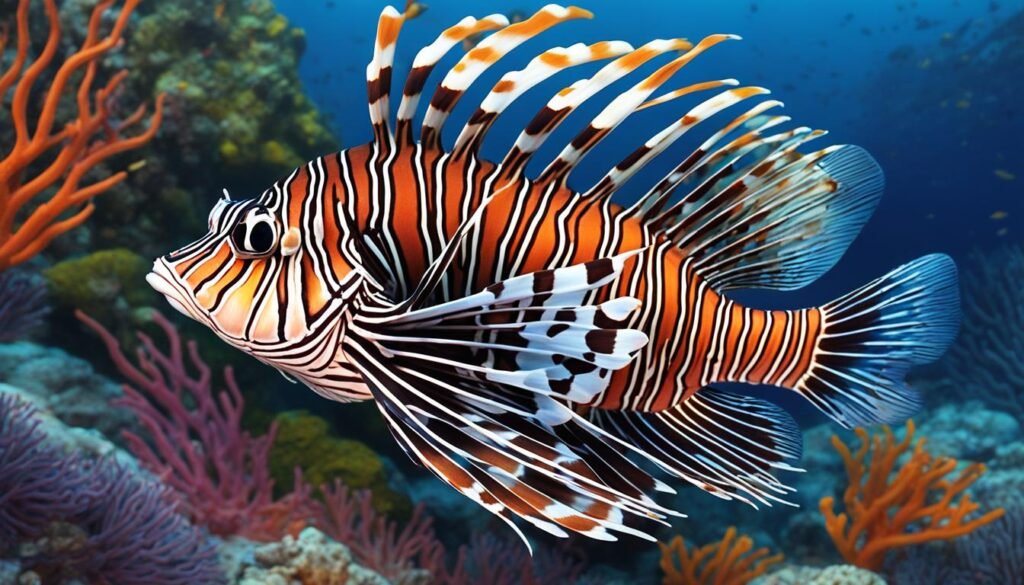
Owning a fu manchu lionfish as a pet can be a rewarding experience, but it also requires responsible fishkeeping practices. These unique aquatic animals require specific tank setups, nutrition, and regular health check-ups to ensure their well-being and longevity.
Firstly, it’s important to provide a suitable tank for your fu manchu lionfish. These fish need plenty of swimming space, so a tank that holds at least 50 gallons is recommended. The tank should also be equipped with hiding places and structures like rocks and corals to encourage natural behavior and reduce stress. Water quality is essential, and a filtration system is necessary to maintain a clean and healthy environment.
Proper nutrition is also crucial for the well-being of fu manchu lionfish. In the wild, they are carnivorous and primarily feed on small fish, crustaceans, and cephalopods. In captivity, offer a varied diet of frozen or live foods, such as shrimp, squid, and various small fish. However, avoid overfeeding, which can lead to health problems like obesity and digestive disorders.
Regular health check-ups are necessary to prevent and treat any potential health issues. Look out for signs of stress, illness, or injury, such as loss of appetite, abnormal behavior, and physical changes. If you suspect any problems, consult an aquarium specialist or veterinarian with experience in fish care.
Overall, owning a fu manchu lionfish as a pet requires commitment and responsibility. To ensure the well-being of these marvelous creatures, it’s crucial to provide a suitable tank setup, proper nutrition, and regular health check-ups.
Conclusion
As I wrap up this article, I can’t help but marvel at the beauty and complexity of the fu manchu lionfish. From its vibrant colors to its venomous spines, this exotic creature has captured the hearts of many marine enthusiasts.
But beyond its appeal as an aquarium pet, it’s crucial to acknowledge the role fu manchu lionfish play in reef ecosystems and the challenges posed by their invasion of non-native regions. As responsible fishkeepers, it’s essential to ensure their welfare while also being mindful of their impact on the underwater world.
Through ongoing scientific research and the efforts of public aquariums and conservation organizations, we can continue to deepen our understanding of these enigmatic creatures and protect their delicate balance with the environment. Whether encountered in the wild or admired in a tank, the fu manchu lionfish is a reminder of the awe-inspiring and mysterious beauty of the ocean.
FAQ
Is the Fu Manchu Lionfish a venomous fish?
Yes, the Fu Manchu Lionfish is a venomous fish. It possesses venomous spines that it uses for self-defense and hunting. However, it is important to note that this venom is primarily a threat to its prey and is rarely dangerous to humans as long as proper precautions are taken.
What are some characteristics of the Fu Manchu Lionfish?
The Fu Manchu Lionfish is known for its vibrant colors, elongated fins, and unique facial features. It has a distinctive appearance that sets it apart from other fish species, making it a popular choice among aquarium enthusiasts. Its beauty and elegance make it a captivating sight to behold.
Can I keep a Fu Manchu Lionfish as a pet in my aquarium?
Yes, Fu Manchu Lionfish can be kept as aquarium pets. However, it is important to consider their care requirements and the potential impact they may have on other species. They need a spacious tank with plenty of hiding places and a suitable diet to thrive. It is also crucial to understand the local regulations regarding the ownership and trade of exotic fish species.
What is the invasive nature of Fu Manchu Lionfish?
Fu Manchu Lionfish are considered invasive species in certain regions of the world. This means that they have been introduced to environments where they are not native and can pose a threat to the local ecosystems. Their voracious appetite and lack of natural predators can disrupt the balance of marine ecosystems by outcompeting native fish species for resources.
Are Fu Manchu Lionfish commonly found in reef ecosystems?
Yes, Fu Manchu Lionfish can be found in reef ecosystems, particularly in the Indo-Pacific region. However, their presence as an invasive species in some areas has raised concerns about their impact on coral reefs. Efforts are being made to manage their populations and protect the delicate balance of these diverse and valuable ecosystems.
What is a Fu Manchu Lionfish?
A Fu Manchu Lionfish is a type of lionfish that has red, white, and black vertical stripes along the body, large fan-like pectoral fins, and tall quill-like dorsal fins. It is unique from other lionfish because of the two feeler-like appendages on the chin.
Where does the Fu Manchu Lionfish live?
The Fu Manchu Lionfish lives in coral-rich, clear waters to depths of 40m (131ft). Its range extends from Mauritius to the Society Islands, north to Japan, and south to Australia.
How big is a Fu Manchu Lionfish?
A Fu Manchu Lionfish can grow up to 10cm (3.9 inches) in length.
What does the Fu Manchu Lionfish eat?
The Fu Manchu Lionfish is a nocturnal predator that feeds on small fishes and crustaceans.
Is the Fu Manchu Lionfish venomous?
Yes, the Fu Manchu Lionfish has venomous spines that can cause painful wounds and allergic reactions. It is advisable to avoid touching or handling this fish without proper protection.
How can I keep a Fu Manchu Lionfish in an aquarium?
The Fu Manchu Lionfish is not suitable for beginners, as it is notoriously difficult to feed and care for in captivity. It requires a 30 gallon or larger aquarium with well filtered water, moderate current, and plenty of shady hiding places. It should be kept only with compatible tankmates that are too large to be eaten and not aggressive. It should be fed meaty foods such as Mysis, krill, prawns, chopped cockle, mussel, lancefish, whitebait, etc.
How can I breed a Fu Manchu Lionfish in an aquarium?
The Fu Manchu Lionfish has not been bred in the home aquarium. It is unknown if it is possible or how to induce spawning.
What are some common names for the Fu Manchu Lionfish?
Some common names for the Fu Manchu Lionfish are Twinspot Lionfish, Ocellated Lionfish, and Two-Spot Turkeyfish.
How can I identify a Fu Manchu Lionfish from other lionfish species?
The Fu Manchu Lionfish can be distinguished from other lionfish species by the following features:
- It has two circular spots on the base of the dorsal fin rays, which give it the name biocellatus.
- It has two long barbels on the lower jaw, which resemble a Fu Manchu mustache.
- It has a smaller mouth and a more slender body than other lionfish species.
What are some threats to the Fu Manchu Lionfish in the wild?
The Fu Manchu Lionfish faces threats from habitat loss, overfishing, pollution, and climate change. It is also vulnerable to invasive lionfish species, such as the red lionfish and the common lionfish, that compete for food and space.
How can I help conserve the Fu Manchu Lionfish in the wild?
You can help conserve the Fu Manchu Lionfish in the wild by supporting marine conservation organizations, avoiding buying or collecting wild-caught specimens, and reporting any sightings of invasive lionfish species to local authorities.
How long does a Fu Manchu Lionfish live?
The lifespan of a Fu Manchu Lionfish is unknown, but some sources suggest that it can live up to 10 years in captivity.
How can I treat a Fu Manchu Lionfish sting?
If you are stung by a Fu Manchu Lionfish, you should seek medical attention as soon as possible. The following steps may help to reduce the pain and inflammation:
- Immerse the affected area in hot water (as hot as you can tolerate) for 30 to 90 minutes.
- Remove any visible spines or fragments with tweezers or a razor blade.
- Clean the wound with soap and water and apply an antiseptic cream.
- Take painkillers and antihistamines as needed.
- Monitor the wound for signs of infection or allergic reaction.
How can I tell the gender of a Fu Manchu Lionfish?
There is no reliable way to tell the gender of a Fu Manchu Lionfish by external appearance. The only way to confirm the sex is by examining the gonads, which requires dissecting the fish.
How can I train a Fu Manchu Lionfish to eat frozen food?
Training a Fu Manchu Lionfish to eat frozen food can be challenging, as it may prefer live prey. Some possible methods are:
- Offering frozen food on a feeding stick or a pair of tongs, and moving it around to simulate live movement.
- Mixing frozen food with live food, and gradually reducing the amount of live food over time.
- Starving the fish for a few days, and then offering only frozen food until it accepts it.
What are some diseases that can affect a Fu Manchu Lionfish in an aquarium?
Some diseases that can affect a Fu Manchu Lionfish in an aquarium are:
- Ich: a parasitic infection that causes white spots on the skin and gills, and can be treated with copper-based medications or raising the water temperature.
- Fin rot: a bacterial infection that causes the fins to decay and fall off, and can be treated with antibiotics or antifungal medications.
- Hole-in-the-head: a nutritional deficiency that causes lesions on the head and lateral line, and can be prevented by providing a varied diet and vitamin supplements.
How can I prevent a Fu Manchu Lionfish from jumping out of the aquarium?
A Fu Manchu Lionfish may jump out of the aquarium if it is stressed, scared, or chased by other fish. To prevent this, you should:
- Cover the aquarium with a tight-fitting lid or a mesh screen.
- Provide enough space and hiding places for the fish to feel comfortable and secure.
- Avoid keeping aggressive or incompatible tankmates with the fish.
How can I tell if a Fu Manchu Lionfish is healthy or sick?
Some signs that a Fu Manchu Lionfish is healthy or sick are:
- Healthy: active, alert, responsive, normal coloration, regular feeding, normal breathing, intact fins, clear eyes, and smooth skin.
- Sick: lethargic, dull, unresponsive, faded or darkened coloration, loss of appetite, rapid or labored breathing, torn or frayed fins, cloudy eyes, and ulcers or spots on the skin.
How can I acclimate a Fu Manchu Lionfish to a new aquarium?
To acclimate a Fu Manchu Lionfish to a new aquarium, you should follow these steps:
- Turn off the lights and reduce the noise in the room where the aquarium is located.
- Float the bag or container with the fish in the aquarium for 15 to 20 minutes to equalize the temperature.
- Open the bag or container and add a small amount of aquarium water every 5 minutes for another 15 to 20 minutes to adjust the salinity and pH.
- Gently release the fish into the aquarium and monitor its behavior for any signs of stress or aggression.
- Feed the fish after a few hours or the next day, depending on its appetite.
References
Please check other articles on this website, I have listed some of them here:
Everything You Need to Know About Caring for Blue Zebra Cichlids in Your Aquarium
Everything You Need to Know About Torch Coral: A Stunning Addition to Your Marine Aquarium
The Fascinating Penguin Tetra: Thayeria boehlkei (2023-24)
The Ultimate Guide to Scarlet Badis Care and Breeding
The Ultimate Bamboo Shrimp | Flower Shrimp Guide Which You Dont Want to Miss Out 2023
The Vibrant and Captivating Strawberry Peacock Cichlid: A Guide to Care and Maintenance
Electric Blue Acara: The Ultimate Guide To Care And Keeping
Best Fish for a 40 Gallon Tank: Top Choices for a Thriving Aquarium
Simple Guide to Easy-to-Care-for Aquarium Plants
Discover the Diverse Corydoras Catfish Varieties- A Guide
Get to Know Various Types of Algae Eaters
Master Guide: Best Water Parameters for Goldfish Care 2023-24
Mastering Black Ghost Knife Fish Care: A Comprehensive Guide
Optimal pH Levels for Tropical Fish: Essential Aquarium Guide
Discovering Freshwater Snail Species: An In-depth Guide
Expert Tips for Breeding Guppies: Keys to Successful Fishkeeping
Discover Peaceful Community Fish: Your Guide to Calm Aquatics
Ultimate Guide to Live Food for Betta Fish — Healthy Choices
Complete Guide to Your Perfect Cichlid Tank Setup
Your Guide to the Best Substrate for Planted Aquariums
Essential Guide to Discus Fish Care: Help Your Pets Thrive!
Grow Your Own Eden: Beginner-Friendly Aquascaping Plants Guide
Perfect Neon Tetra Tank Mates: Guide to Aquarium Harmony
Product Review of Eheim Classic vs Professional
The Ultimate Guide to Discus Fish Care
What Fish Can Live With Discus?
Ideal pH for Discus Fish | Aquarium Water Guide
How to Sex Discus Fish?: A Simple Guide for Hobbyists
Complete Discus Fish Tank Setup Guide
Can Discus Fish Live With Angelfish? The Complete Guide
Discus Diet Guide: What Do Discus Fish Eat?
Are Discus Fish Hard to Keep? Insights & Tips.
Optimal Discus Fish Water Parameters Guide
Discus Fish Size Guide 2024: How Big Do Discus Fish Get?
Ultimate Million Fish Guppy Care Guide 2024
Simple Guide to Easy-to-Care-for Aquarium Plants
Grow Your Own Eden: Beginner-Friendly Aquascaping Plants Guide
Hornwort Aquarium Plants: The Ultimate Guide to Care and Maintenance
Aquarium Equipment for Beginners: The Complete Checklist
Feeding Your Aquarium Fish: The Complete Guide
Common Beginner Fishkeeping Mistakes and How to Avoid Them!
Aquarium Plants for Beginners: Easy Care and Beautiful Options
Keeping Your Aquarium Water Clean and Healthy: The Complete Guide
Breeding Aquarium Fish: A Comprehensive Guide
Marine Aquariums: The Ultimate Challenge for Experienced Hobbyists
Tech in the Tank: Must-Have Gadgets for Aquarium Automation
Dwarf Sucking Catfish : The Ultimate Guide to Keeping and Caring for Oto Catfish
The Science of Aquarium Water Chemistry: Understanding pH, KH, and GH
Veiltail Goldfish: The Exquisite Beauty of Flowing Fins
Perfect Neon Tetra Tank Mates: Guide to Aquarium Harmony
Goldfish Care: Beyond the Bowl – Everything You Need to Know
Master Red Tail Shark Care: Tips, Tank Mates & Surprising Traits!
Sheepshead Wrasse Facts & Habitat Guide
Unveiling the Unique Asian Sheepshead Wrasse: A Fascinating Reef Fish with Quirky Behavior
Peacock Wrasse: A Dazzling Addition to Your Aquarium
Vibrant Wrasse Fish: Care Guide & Species Info
Bluestreak Cleaner Wrasse – Vibrant Reef Ally
Coris Wrasse Care Guide for Saltwater Aquariums
Melanurus Wrasse Care Guide & Habitat Tips
The Ultimate Guide to Kuhli Loach
The Ultimate Guide to Popular Loach Species for Freshwater Tanks
Yoyo Loach: The Ultimate Guide to This Fun and Friendly Fish
How to Care for Clown Loaches: The Ultimate Guide for Aquarium Lovers
Optimal Times to Feed Tropical Fish Daily
How to Care for Dojo Loach, the Friendly and Playful Aquarium Fish
How to Care for Zebra Loach: The Ultimate Guide for Beginners
I am a passionate aquarist with over 30 years of hands-on experience in fishkeeping. My journey began at a young age, collecting fish from the wild and learning through experimentation. Specializing in tropical fish, I bring a deep understanding of the hobby to FishKeepingMadeSimple. The site provides honest, detailed reviews of essential products and accessories to help fellow enthusiasts create the best environments for their fish.

